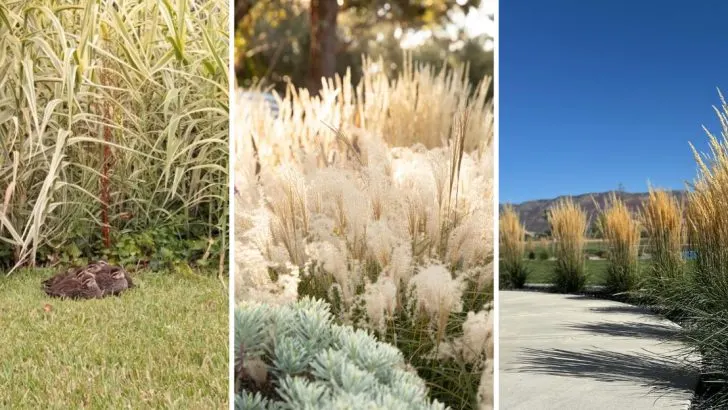When it comes to adding privacy to your outdoor space, fences aren’t your only option. Tall ornamental grasses offer a beautiful and eco-friendly alternative that not only shields your yard but also adds texture, movement, and a touch of elegance to your garden.
These grasses are low-maintenance, adaptable, and a great way to blend functionality with natural beauty.
In this article, we’ll introduce 12 stunning tall ornamental grasses that can create a natural privacy screen while enhancing the overall look of your outdoor spaces. Whether you’re aiming for a modern vibe or a more organic feel, these grasses are a stylish solution to protect your sanctuary.
Miscanthus sinensis
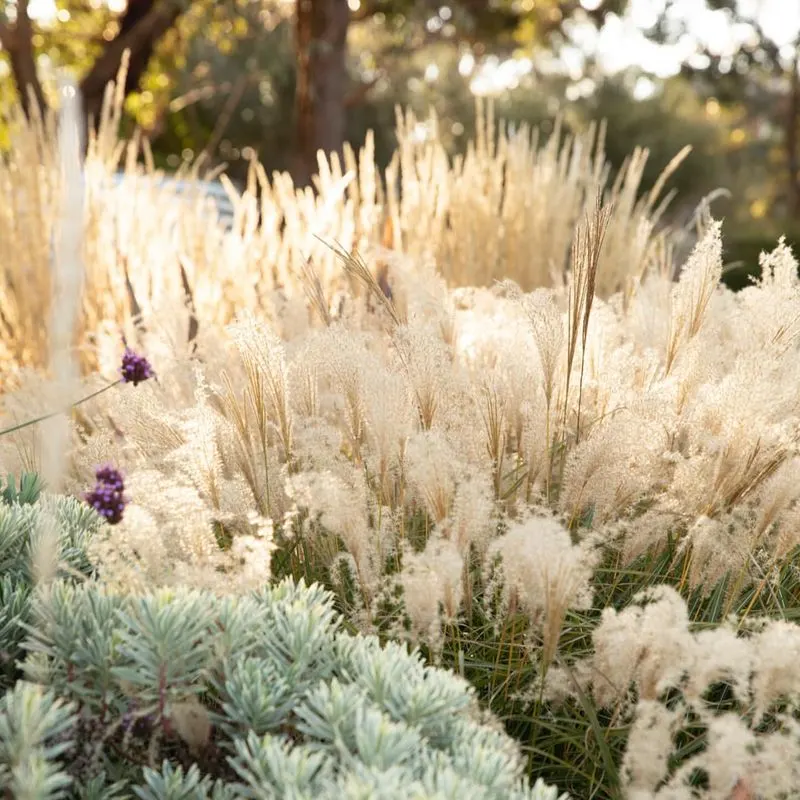
This striking grass, known for its feathery plumes and tall stature, can reach heights of up to eight feet. It’s perfect for creating a natural, flowing screen. The dense foliage of Miscanthus sinensis provides excellent coverage, ensuring your privacy from neighboring views.
In late summer, its silvery tassels catch the sunlight, adding an extra layer of visual interest to your garden. Easy to maintain, this grass requires minimal care once established. It thrives in a variety of soil types, making it a versatile choice for many landscapes. Consider planting in clusters for maximum impact.
Panicum virgatum
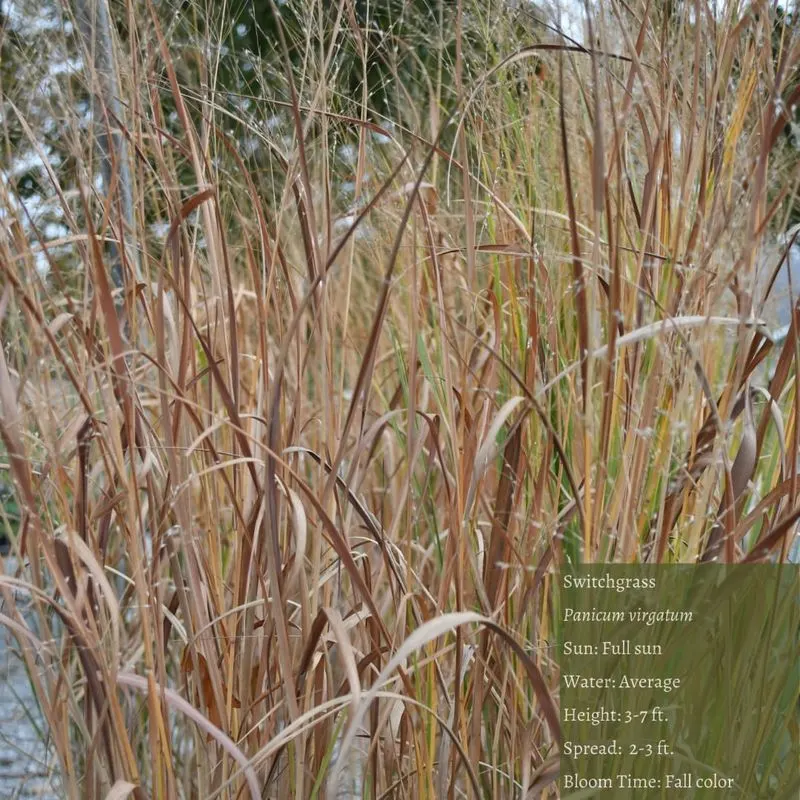
Known commonly as switchgrass, Panicum virgatum is a native North American grass that adds both color and height to your garden. Reaching up to six feet tall, its airy flower panicles create a soft, flowing barrier.
During autumn, its foliage turns a striking red or purple, providing a seasonal splash of color. This adaptable grass is drought-tolerant and can thrive in less-than-ideal soil conditions. Use it as a backdrop for other plants or to line pathways, offering a natural guide through your outdoor space. Regular pruning helps maintain its shape and vigor.
Calamagrostis x acutiflora
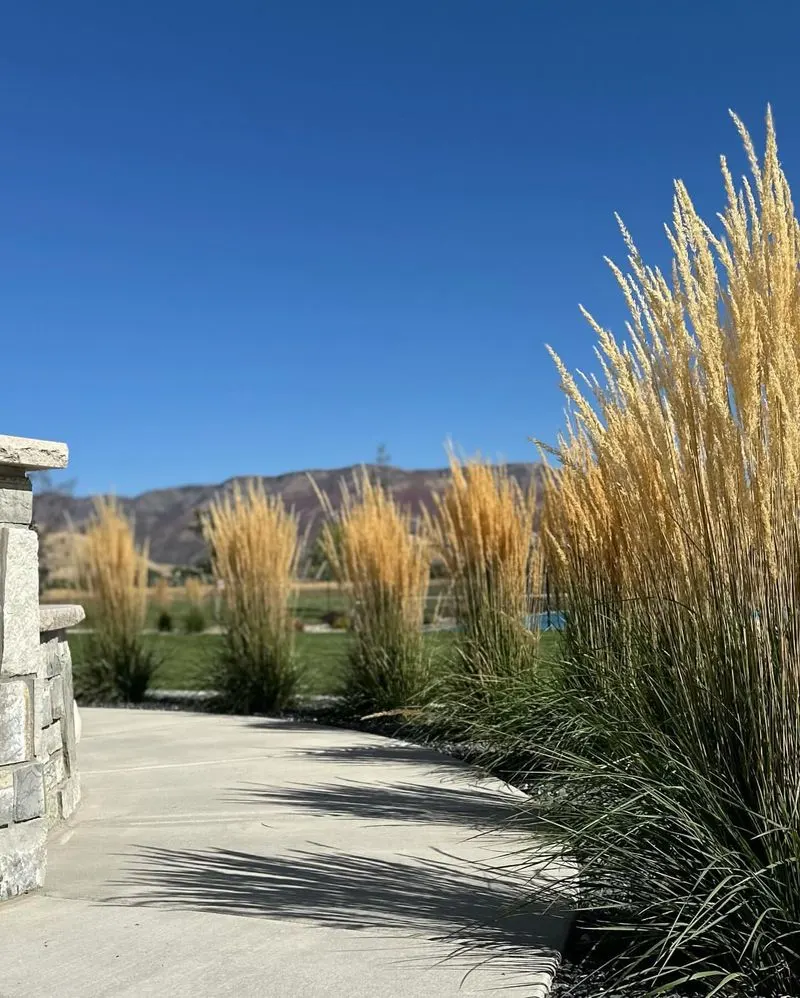
Often referred to as feather reed grass, this species is known for its upright, narrow form, reaching up to five feet in height. It creates a vertical element that contrasts beautifully with more rounded garden shapes.
The golden flower spikes of Calamagrostis x acutiflora appear in early summer and persist into winter, adding longevity to your garden’s visual appeal. Ideal for small spaces, its tidy growth habit suits urban gardens. It’s hardy and low-maintenance, tolerating a range of climatic conditions. Plant in rows for a structured, modern look that softens over time.
Arundo donax

Arundo donax, or giant reed, is a towering grass that can soar up to 20 feet, making it an excellent choice for maximum privacy. Its tall, bamboo-like stems add an exotic touch to any landscape.
This grass is particularly effective in wet areas, often used to stabilize soil around ponds or streams. Despite its size, Arundo donax is surprisingly easy to manage, requiring minimal water once established. Its dense growth blocks noise as well as sight, offering a peaceful retreat from the outside world. Regular trimming keeps its vigorous growth in check.
Cortaderia selloana
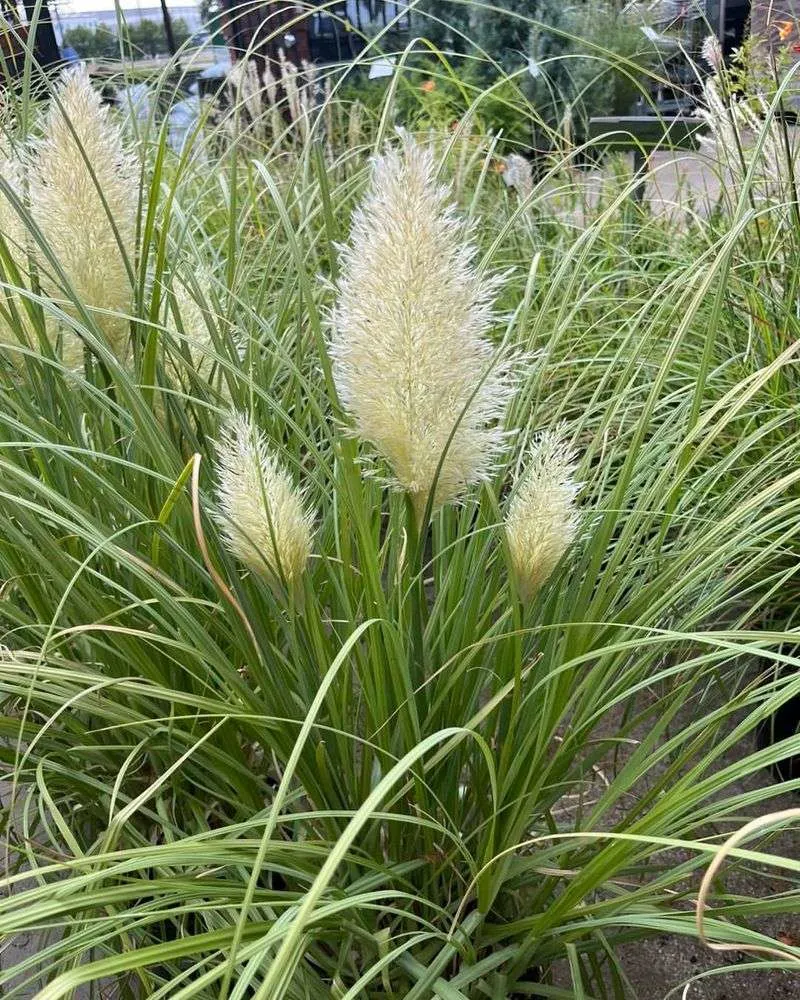
Cortaderia selloana, or pampas grass, is iconic for its large, silky plumes that rise above dense green foliage. It can reach heights of ten feet, creating a dramatic privacy screen.
This grass thrives in sunny locations and can tolerate coastal conditions, making it ideal for seaside gardens. Its showy plumes can be used as cut flowers, adding elegance indoors. Cortaderia requires space to spread, so plant in areas where it can be the focal point. Regular removal of dead foliage is necessary to maintain its health and appearance.
Saccharum ravennae
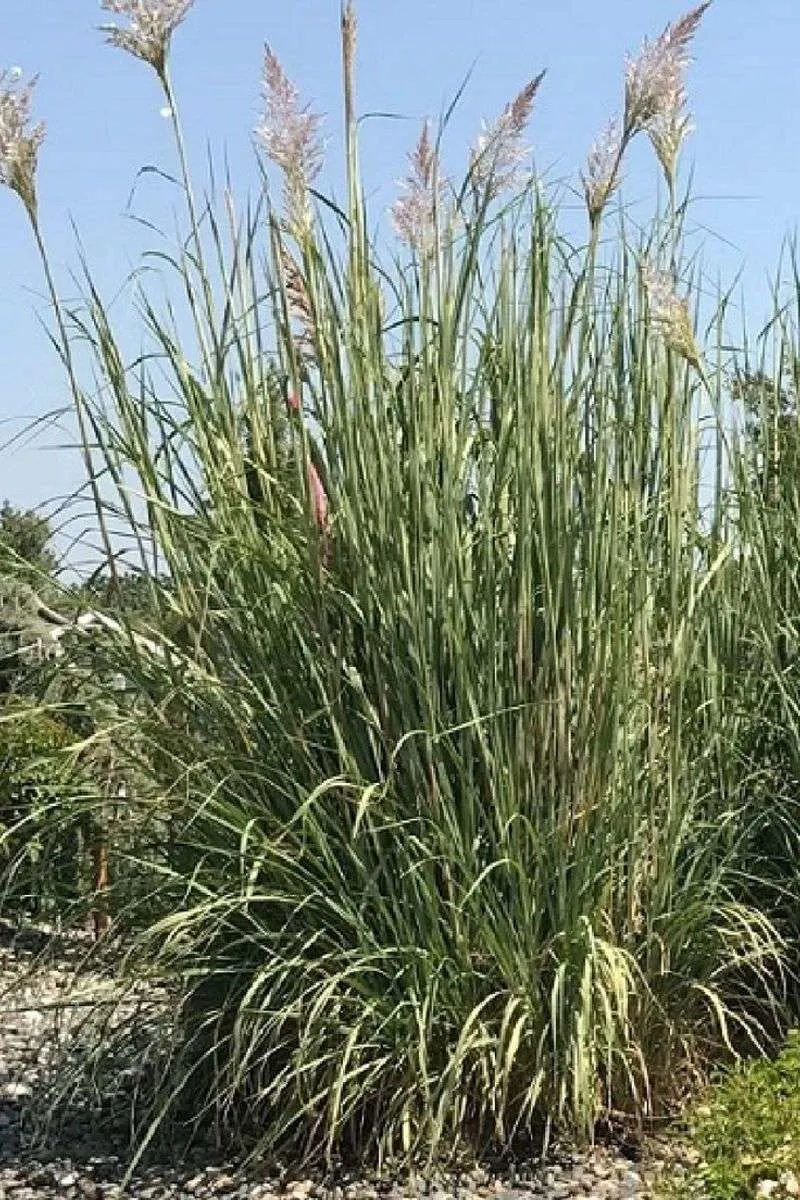
Also known as Ravenna grass, this species stands out with its majestic silver-purple flower spikes. It can grow up to 12 feet high, providing an impressive privacy barrier.
The tall, narrow leaves add texture and movement, creating a dynamic space. This grass is drought-resistant, thriving in dry, sunny locations. Its robust nature allows it to withstand harsh weather, making it a resilient choice for challenging environments. Plant in clusters or as a standalone specimen to create visual interest. Regular pruning helps to maintain its upright form.
Chasmanthium latifolium
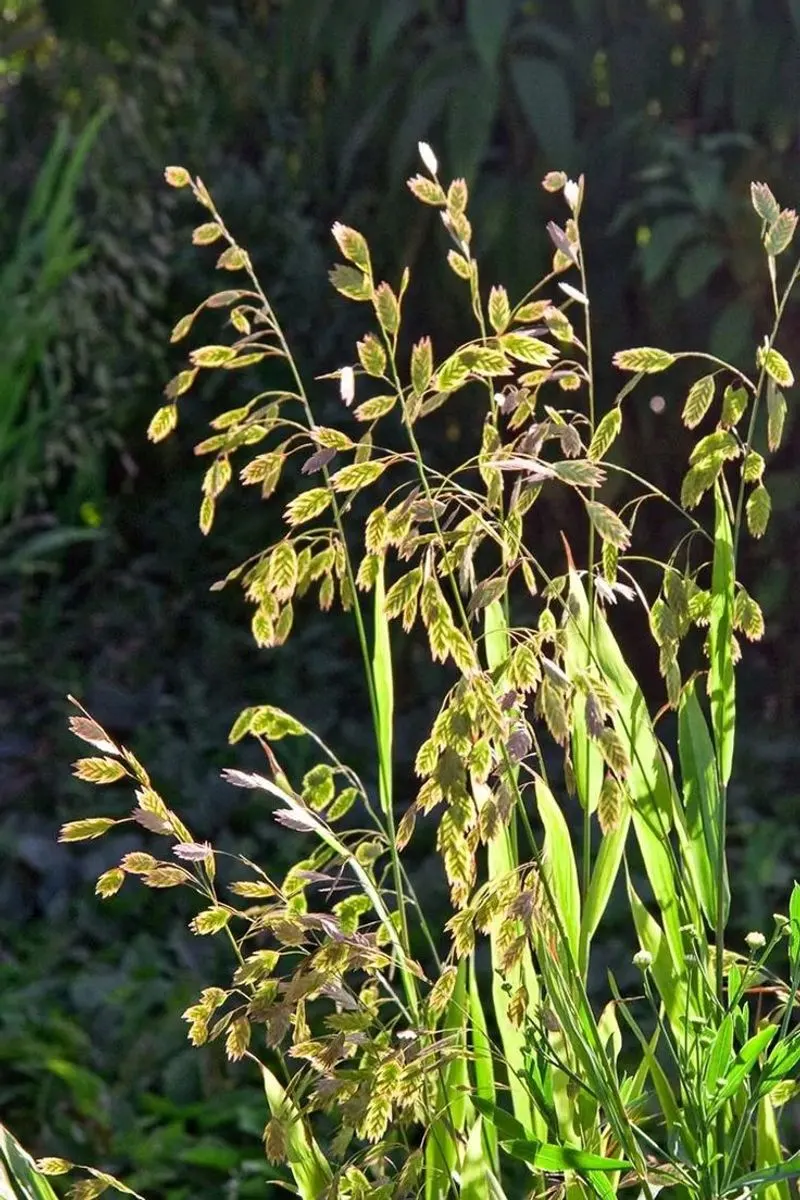
Known as northern sea oats, Chasmanthium latifolium offers unique, drooping seed heads that resemble oats, adding a distinctive look to your garden. It reaches up to four feet in height, ideal for mid-height privacy screens.
The seed heads catch the light beautifully, adding shimmering movement to the landscape. This grass thrives in shaded or partially shaded areas, making it versatile for different garden settings. It’s also tolerant of poor soil, providing a solution for difficult planting spots. Regular cutting back in late winter encourages fresh, vigorous growth in spring.
Molinia caerulea

Molinia caerulea, or purple moor grass, captivates with its tall, airy flower spikes that rise elegantly above its base foliage. It can grow up to six feet, offering a graceful screen.
The delicate flower spikes create a soft, ethereal effect, particularly striking in morning light or mist. This grass prefers moist, acidic soils, thriving in naturalistic garden settings. It’s particularly effective in mass plantings or mixed borders, adding height without overwhelming other plants. Minimal maintenance is required beyond occasional pruning. Its subtle color palette blends easily into most landscapes.
Pennisetum alopecuroides
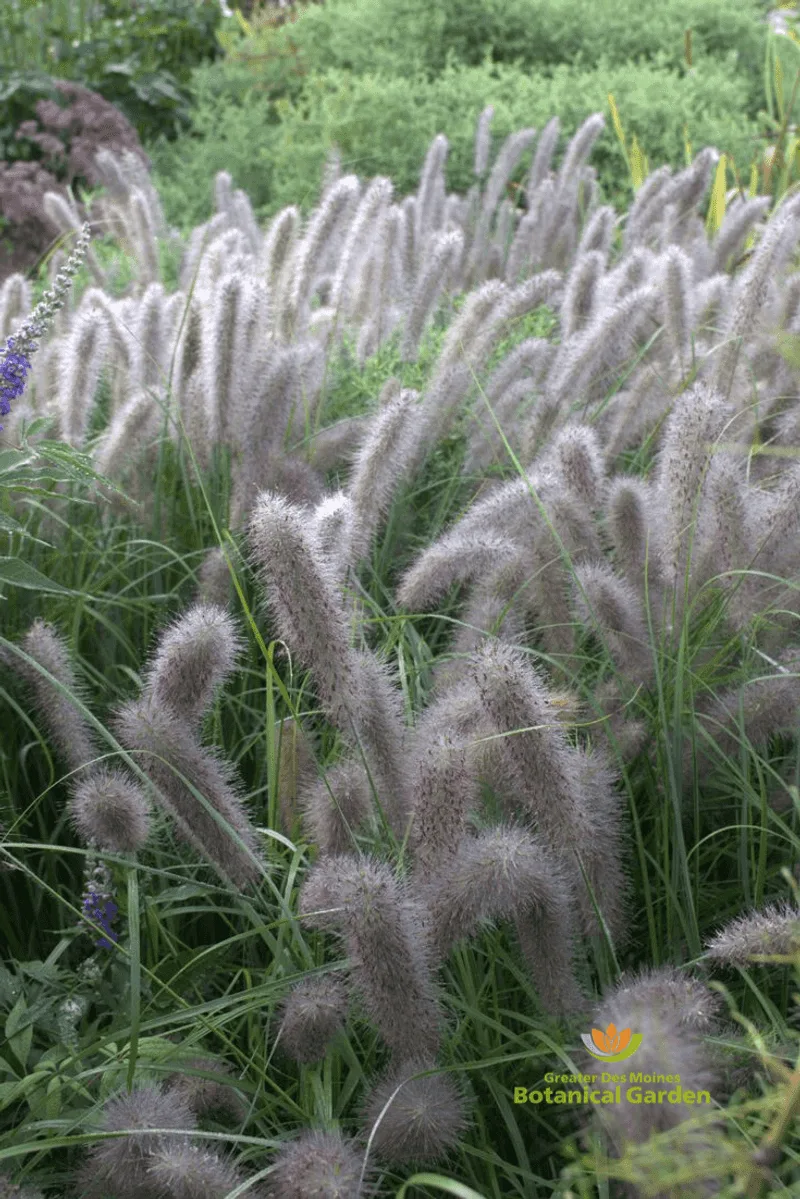
Commonly known as fountain grass, Pennisetum alopecuroides is a popular choice for its soft, arching foliage and bottlebrush-like flower heads. It grows up to four feet, perfect for smaller privacy needs.
The flower heads add texture and interest, particularly when they catch the sunlight. This grass is adaptable to many soil types and conditions, thriving in sunny spots. It’s particularly effective in borders or as a ground cover, creating a cohesive look. Regular deadheading encourages more blooms, keeping your garden vibrant throughout the growing season.
Spartina pectinata
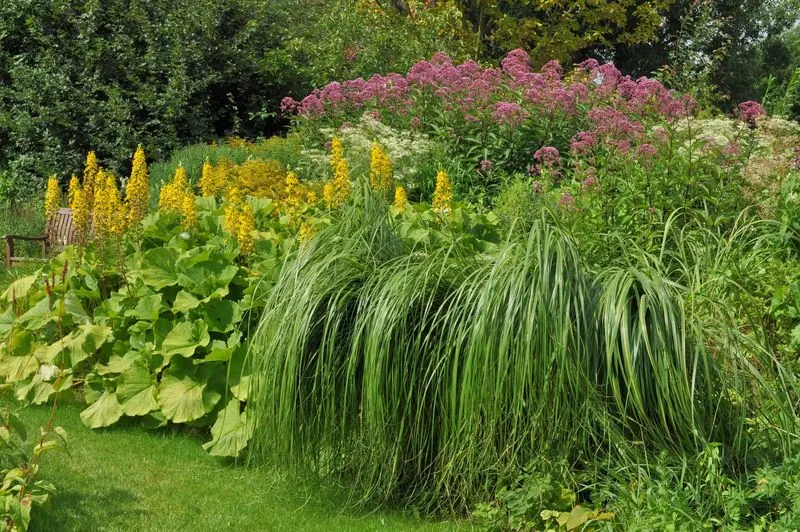
Spartina pectinata, also known as prairie cordgrass, is a robust species known for its tall, slender blades that create dense coverage. It can reach up to eight feet, forming a formidable natural barrier.
This grass is particularly suited to wet areas, thriving along streams and ponds. Its dense growth not only provides privacy but also helps prevent soil erosion. It’s a low-maintenance option, requiring little more than annual cutting back to promote fresh growth. Plant along property lines or pathways for a natural, uninterrupted screen that blends with the landscape.
Stipa gigantea
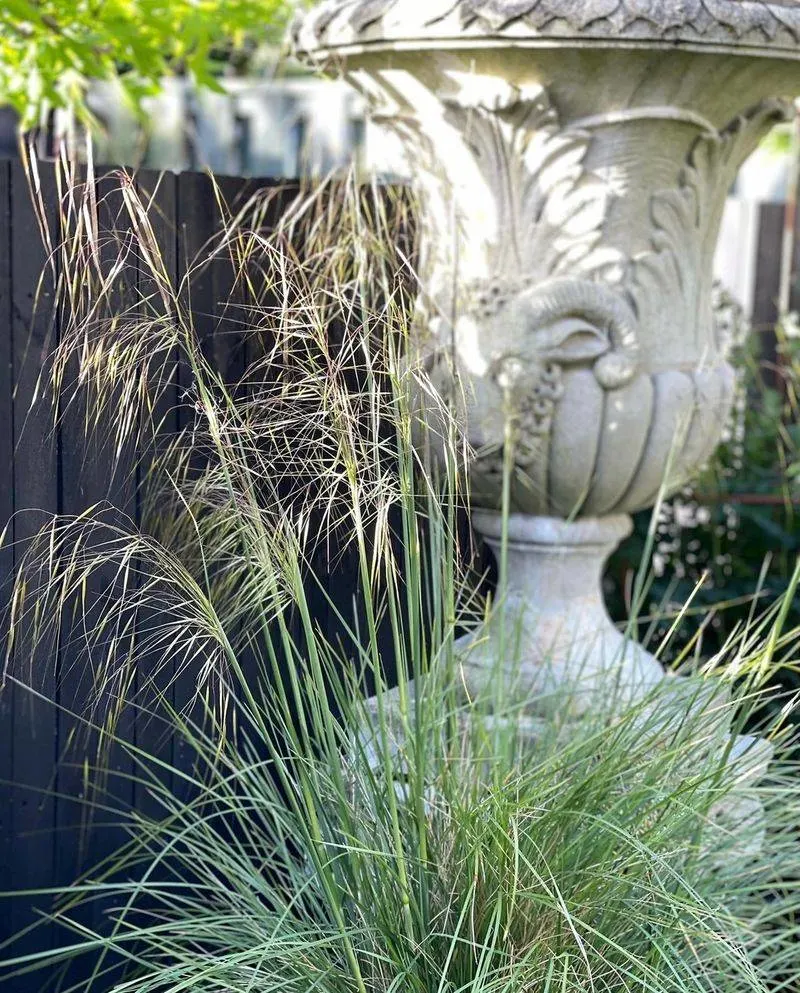
Stipa gigantea, or giant feather grass, is renowned for its golden seed heads that shimmer in the sun atop long, elegant stalks. It reaches heights of up to eight feet, offering a majestic screen.
The striking seed heads remain attractive well into winter, providing year-round interest. This grass prefers well-drained soils and sunny locations, making it suitable for a variety of garden styles. Its open, airy habit doesn’t block light, allowing it to pair beautifully with other plants. Regular trimming keeps it tidy while encouraging new growth.
Miscanthus giganteus
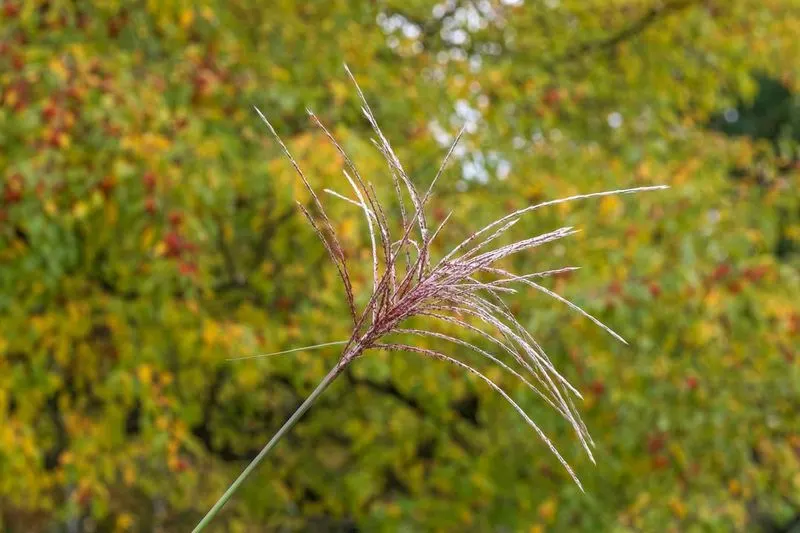
Miscanthus giganteus is a hybrid grass that towers up to 12 feet, perfect for creating substantial privacy barriers. Its lush green foliage and silver tassels add a dynamic element to any garden.
This grass is fast-growing, making it ideal for quickly establishing a screen. It thrives in sunny locations and is tolerant of a wide range of conditions, from dry to moderately wet soils. Its dense growth helps reduce noise, creating a serene garden atmosphere. Minimal maintenance is needed, primarily cutting back in early spring to make way for new growth.

